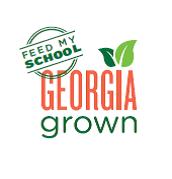Originally published in the Sept. 18, 2013, issue
By Randy Moore
 |
| Moore |
Welcome
to the 24th annual state-sponsored Georgia National Fair, Oct. 3 through 13: “There’s
Magic in the Fair!”
The
fair highlights some of Georgia’s greatest assets: our youth and agriculture. During
the 11-day event, you will experience every facet of the fair; horse and
livestock shows, youth competitions, Georgia Living exhibits and contests,
food, rides, circus, vendors, family entertainment, concerts and nightly
fireworks.
The
new Georgia Grown building highlights Georgia’s diverse agricultural industry
by showcasing its products, services and education. Fairgoers will learn why
agriculture is the state’s No. 1 industry. The Georgia Grown Pavilion sells
unique Georgia-made products such as jams and jellies, nuts, baked goods,
sauces and relishes.
The
third annual Legislative Livestock Showdown, Oct. 5, pairs Georgia House and
Senate legislators with an experienced 4-H or FFA livestock show participant as
their "teacher." Dressed in
their special showmanship shirts, the legislators go through the process of
preparing an animal for the show ring. In the showmanship class, the judging
process focuses on how they handle the heifer. The first-place winner receives
10 points; the 10th place winner, one point. Scores are tallied and the winning
team will be presented with the Showdown Trophy. The House has won the trophy
the past two years.
Reaves
Arena concerts include Hunter Hayes with Love and Theft, Oct. 5; Justin Moore
and Thompson Square, Oct. 12. All seats are reserved and on sale at
www.georgianationalfair.com.
The Georgia National Fair is
special and unique. It’s the perfect time and place for families and friends to
gather and have fun. We encourage you to visit the many educational aspects of
the fair. We also encourage you to participate in the fair. It’s a sense of
great pride to win a blue ribbon at the Georgia National Fair.
The
Georgia Agricultural Exposition Authority and staff hope you enjoy everything
the fair has to offer. From Georgia’s outstanding youth and top livestock to
the lights and sounds of the entertainment and rides, the Georgia National Fair
is magical!
The
Georgia National Fair has won many awards and honors, but nothing gives us more
pleasure than knowing you and your family and friends are having a great time. The
staff is here to assist you in any manner. We look forward to seeing you in
Perry!
Randy
Moore is the executive director of the Georgia National Fairgrounds and
Agricenter and the Georgia National Fair in Perry, Ga.






















